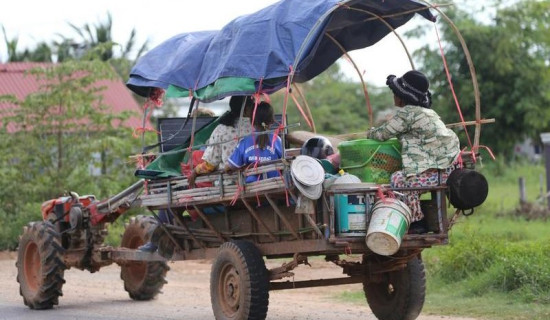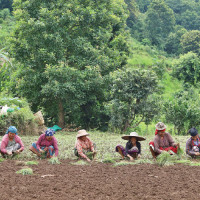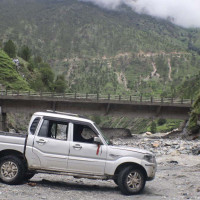- Saturday, 2 August 2025
WB lowers Nepal's economic growth rate to 4.5%
By A Staff Reporter,Kathmandu, Apr. 24: The World Bank's growth forecast for Nepal has been downgraded to 4.5 per cent in the current Fiscal Year 2024/25 from the earlier projections of 4.6 per cent due to damage from floods and landslides.
Likewise, the growth projection for the next FY 2025/26 is reduced to 5.2 per cent from 5.4 per cent owing to the persistent weakness in the financial system, reported the WB's South Asia Development report published on Wednesday.
Although these projections are above the estimates for 3.9 per cent of 2023/24, these are not encouraging. The government has projected 6 per cent growth for this year.
According to the report, the downgrade is due to persistent weakness in the financial system. Private sector credit has been contracting as a share of GDP, and many financial sector cooperatives have suffered losses or gone bankrupt because of nonperforming loans, particularly to the real estate sector.
"Nepal has also been relisted by the Financial Action Task Force, for the second time, on the grey list of countries that require greater financial monitoring due to not fully implementing money laundering and terrorist financing reforms," read the report.
However, this is the trend across the South Asian region.
The multilateral donor said in its report that amid increasing uncertainty in the global economy, South Asia’s growth prospects have weakened, with projections downgraded in most countries in the region.
"Stepping up domestic revenue mobilisation could help the region strengthen fragile fiscal positions and increase resilience against future shocks,” said the World Bank in its twice-yearly regional outlook.
The report projected regional growth to slow to 5.8 per cent in 2025—0.4 percentage points below October projections—before ticking up to 6.1 per cent in 2026. This outlook is subject to heightened risks, including from a highly uncertain global landscape, combined with domestic vulnerabilities including constrained fiscal space.
“Multiple shocks over the past decade have left South Asian countries with limited buffers to withstand an increasingly challenging global environment. The region needs targeted reforms to address vulnerabilities such as fragile fiscal positions, backward agricultural sectors, and the impact of climate related shocks,” said Martin Raiser, World Bank Vice President for South Asia.
In India, growth is expected to slow from 6.5 per cent in 2024/25 to 6.3 per cent as in 2025/26 as the benefits to private investment from monetary easing and regulatory streamlining are expected to be offset by global economic weakness and policy uncertainty.
Likewise, according to the report, causes of adjustment in Bangladesh are political uncertainty and persistent financial challenges, in Bhutan weak agriculture sector growth.









-original-thumb.jpg)







